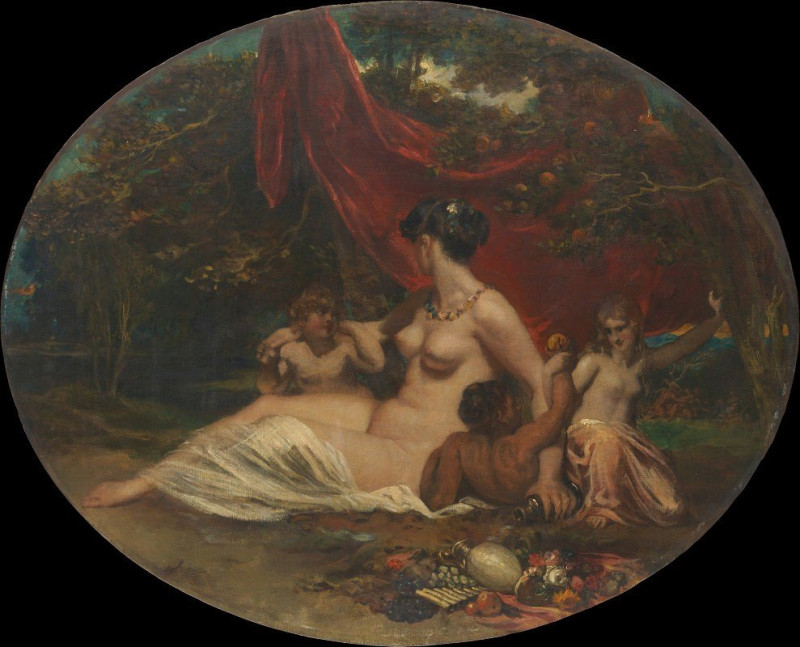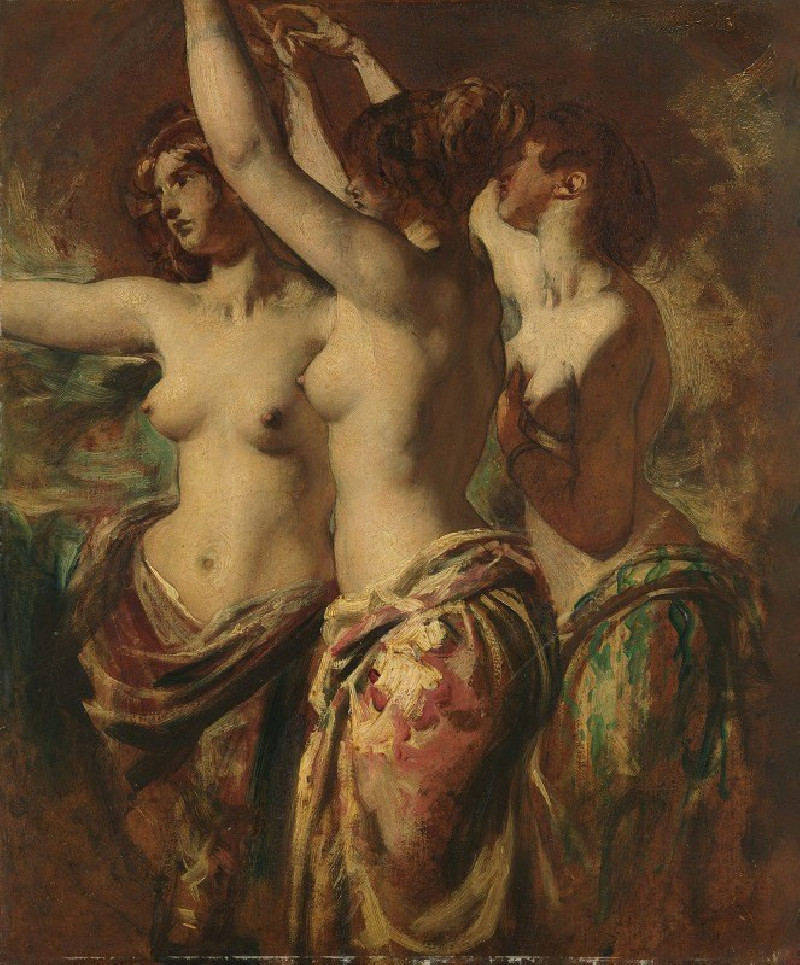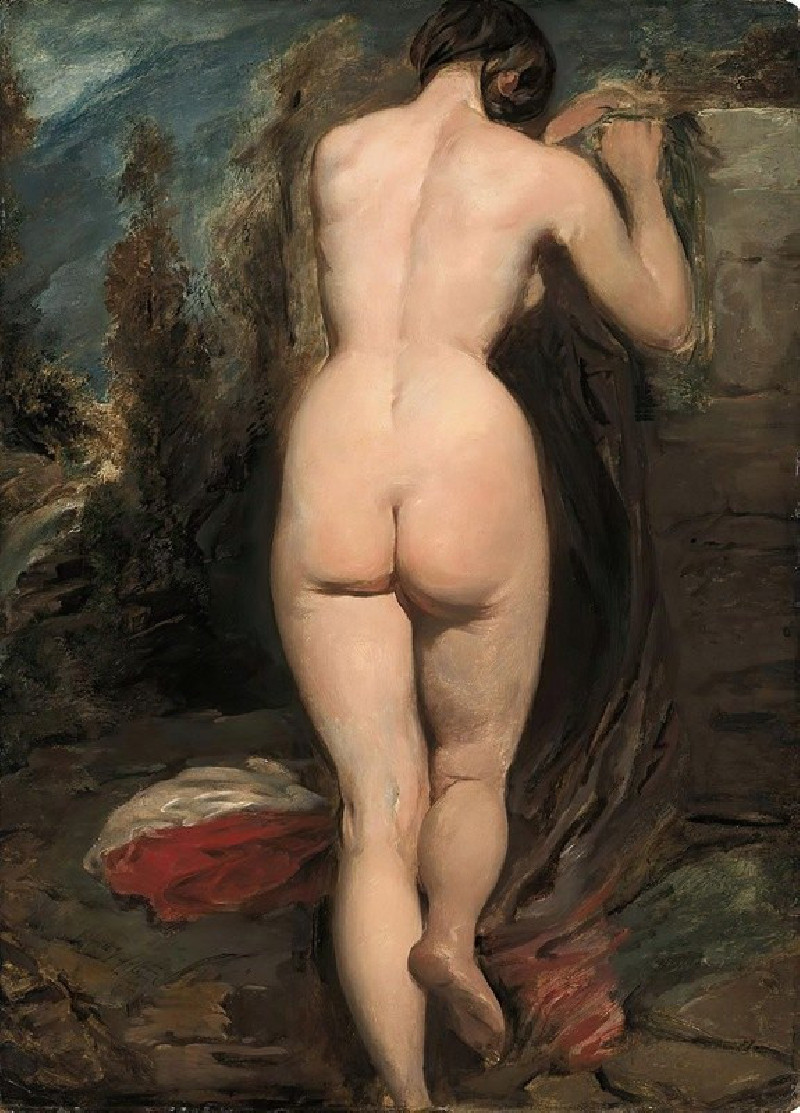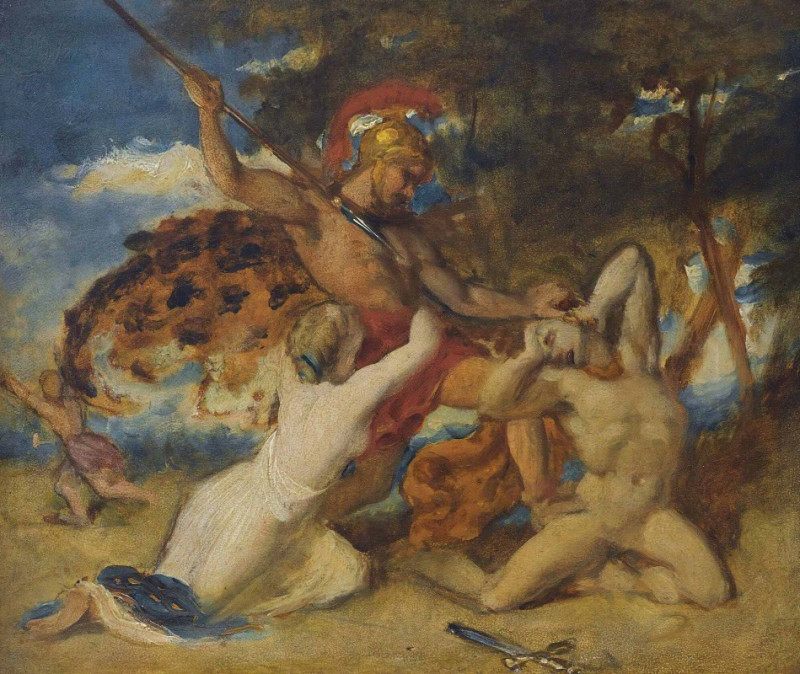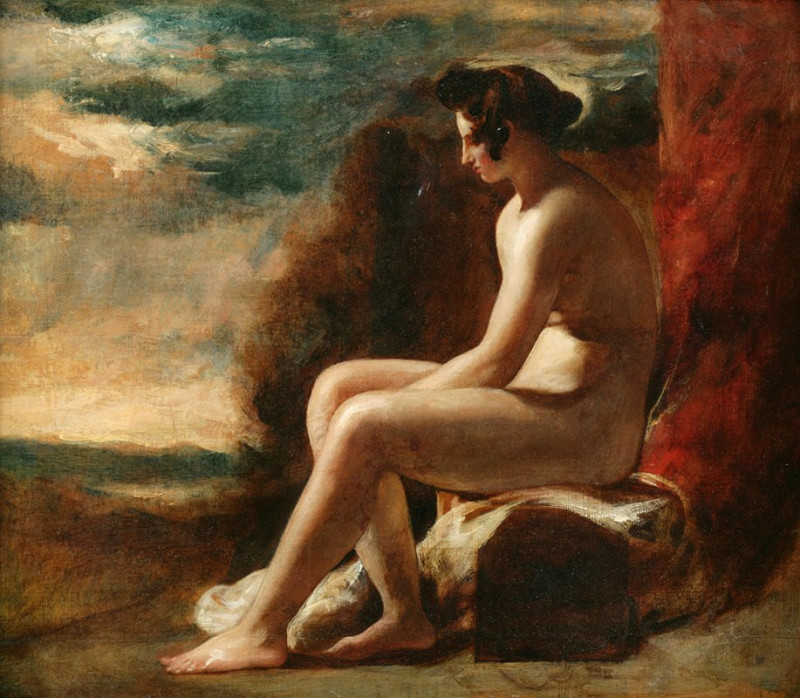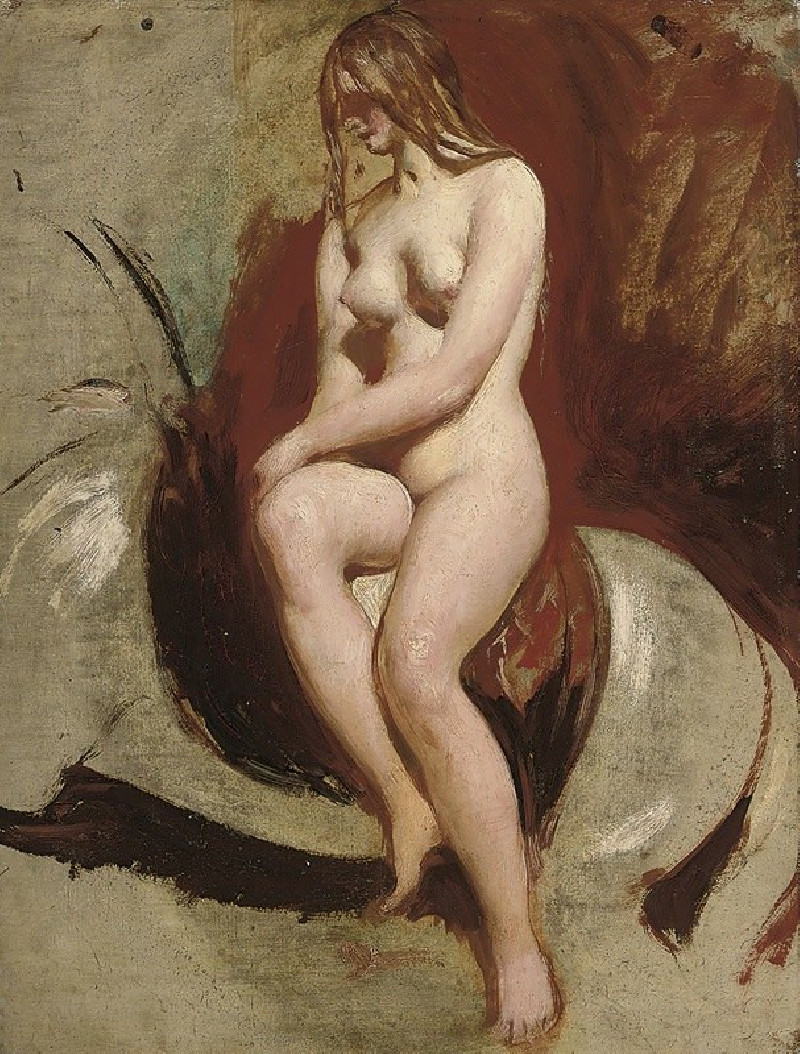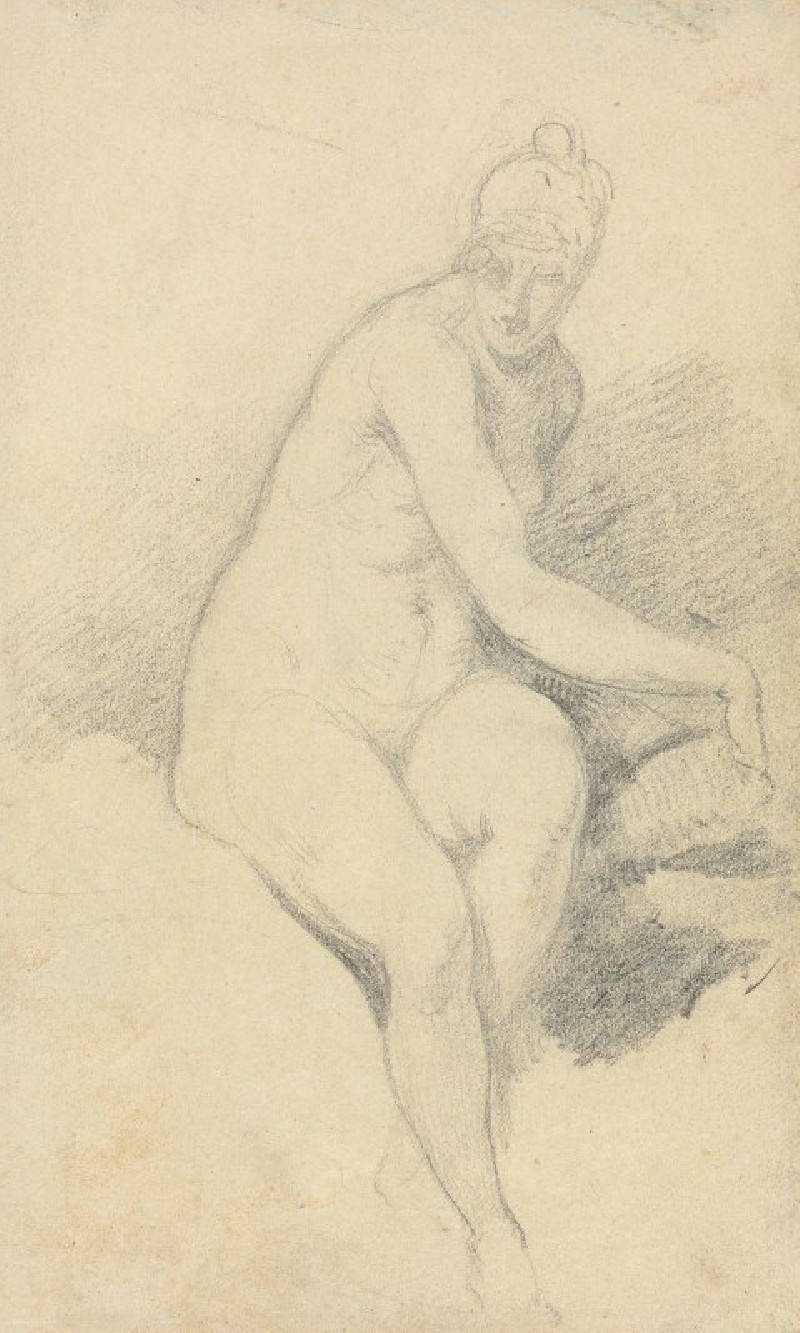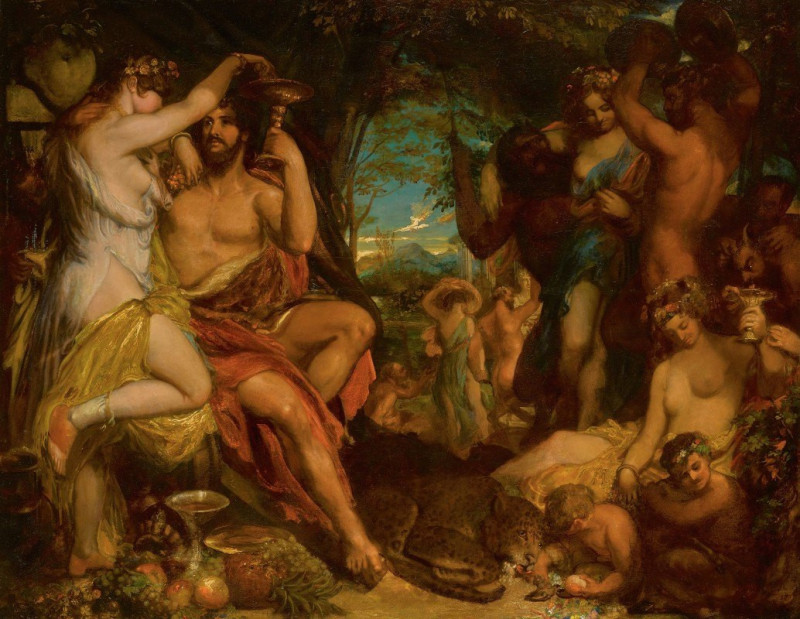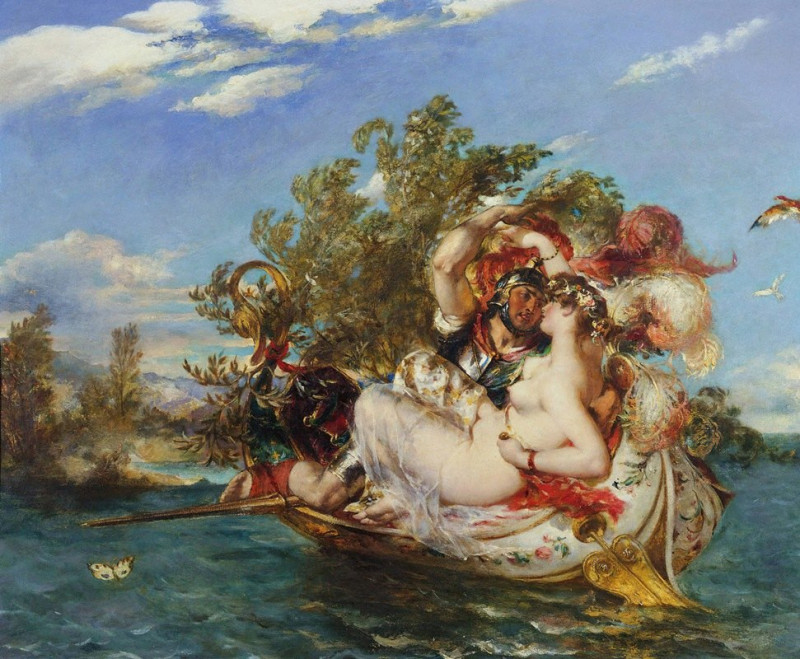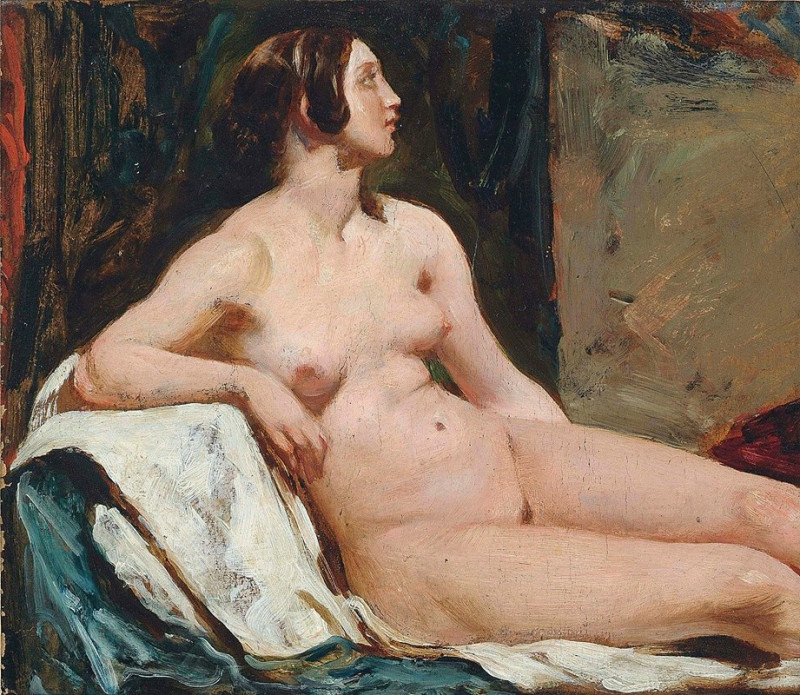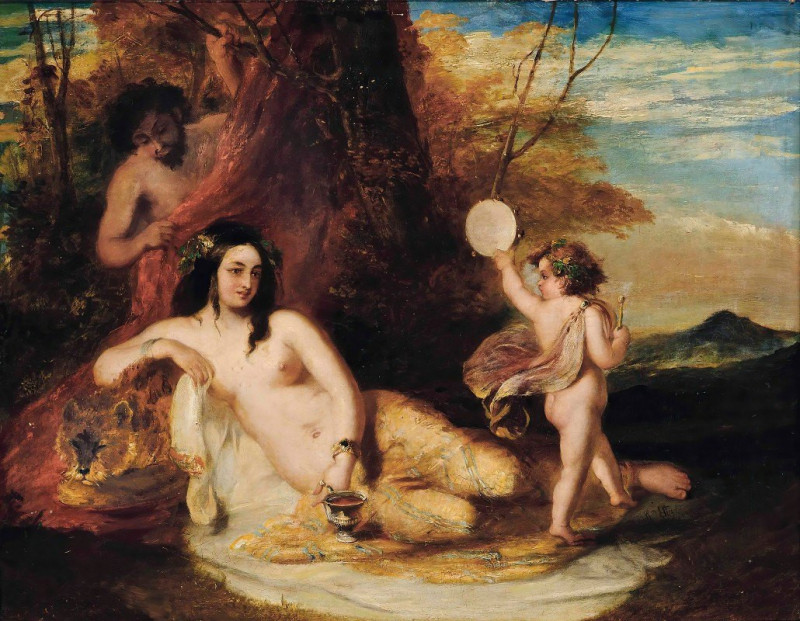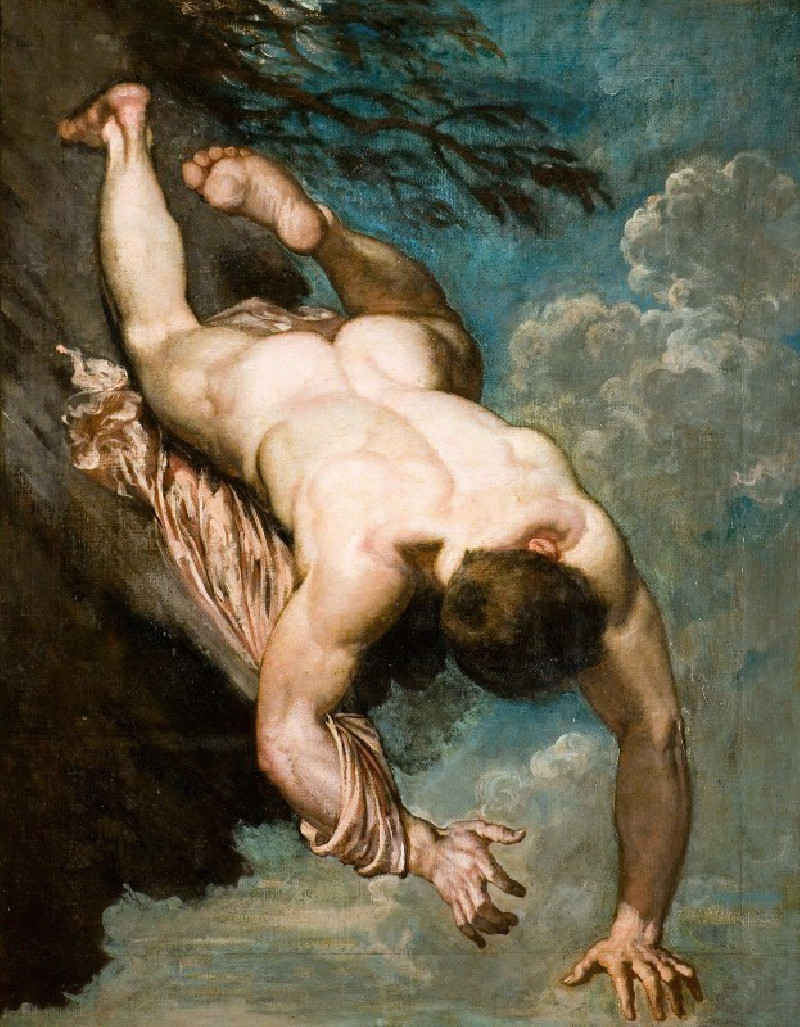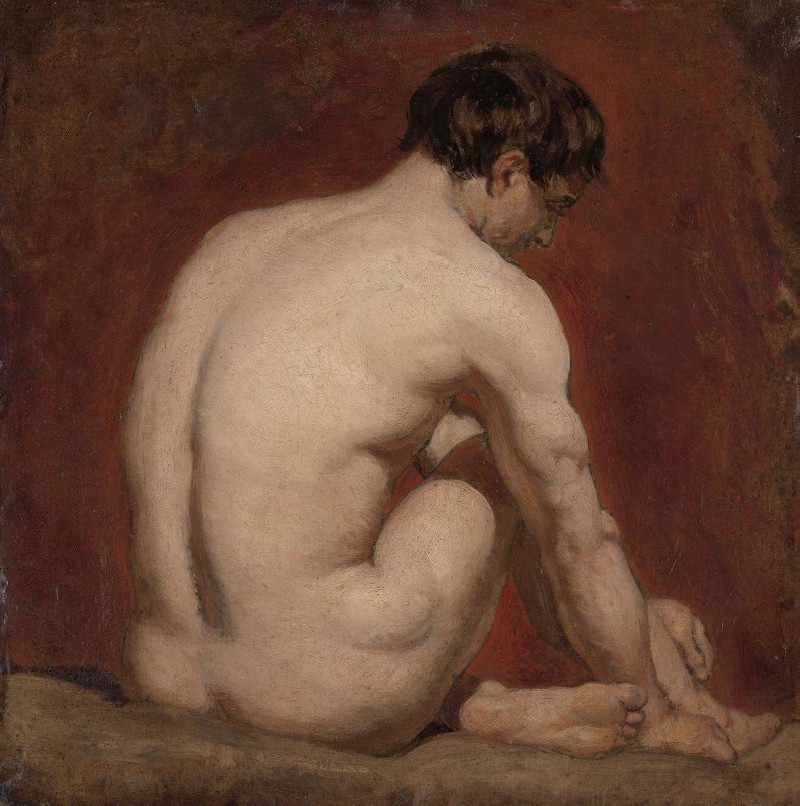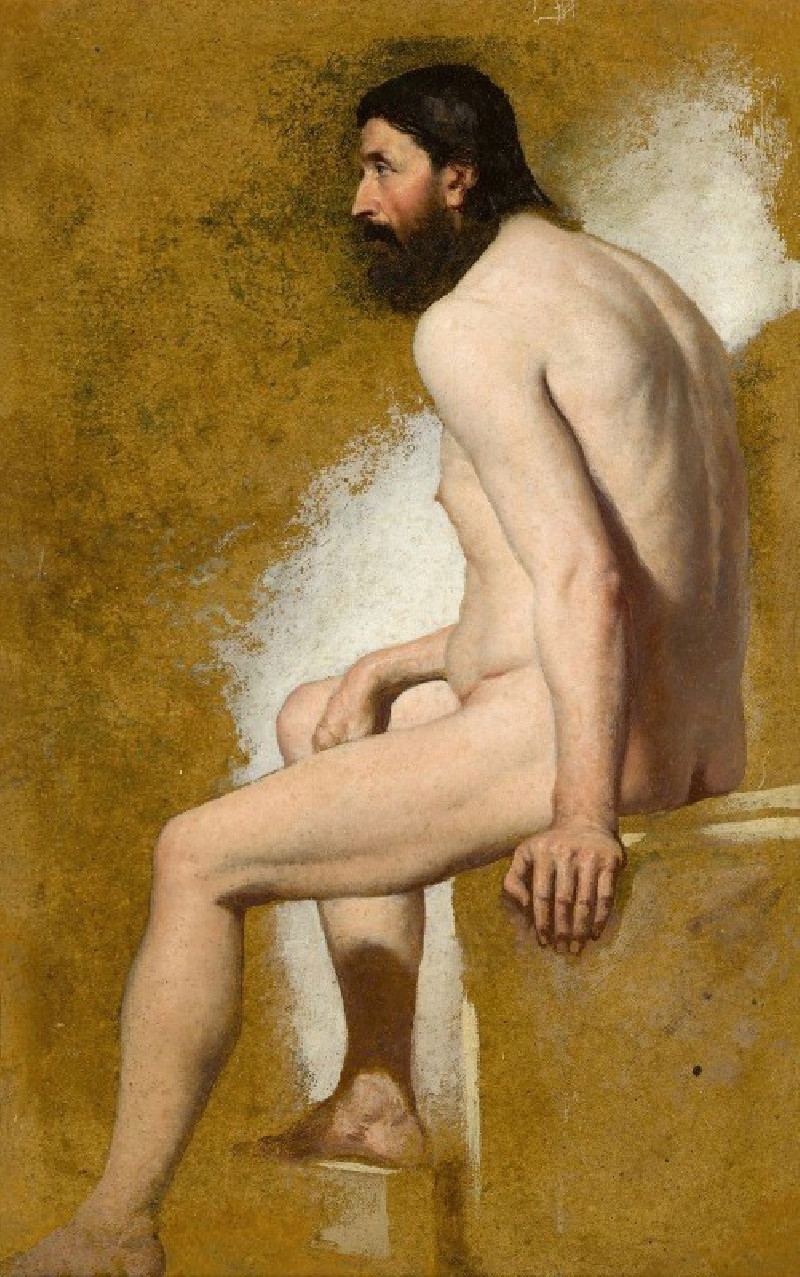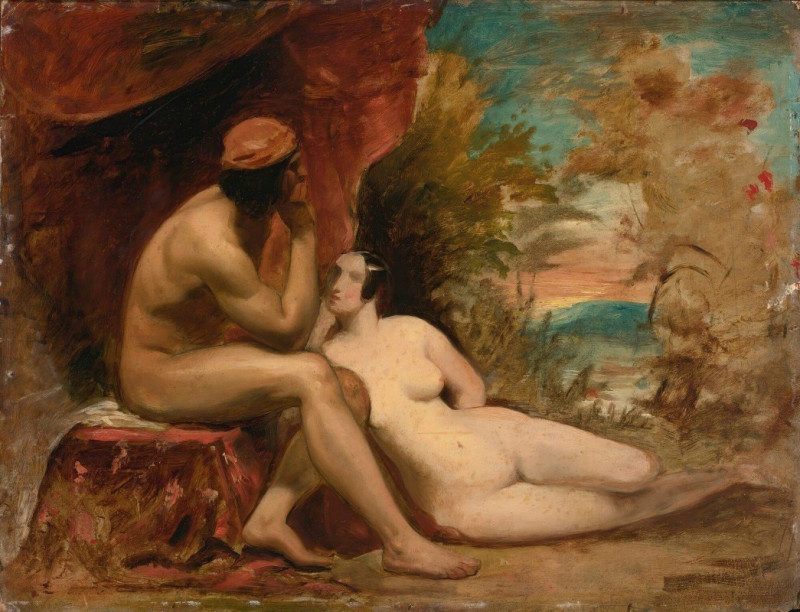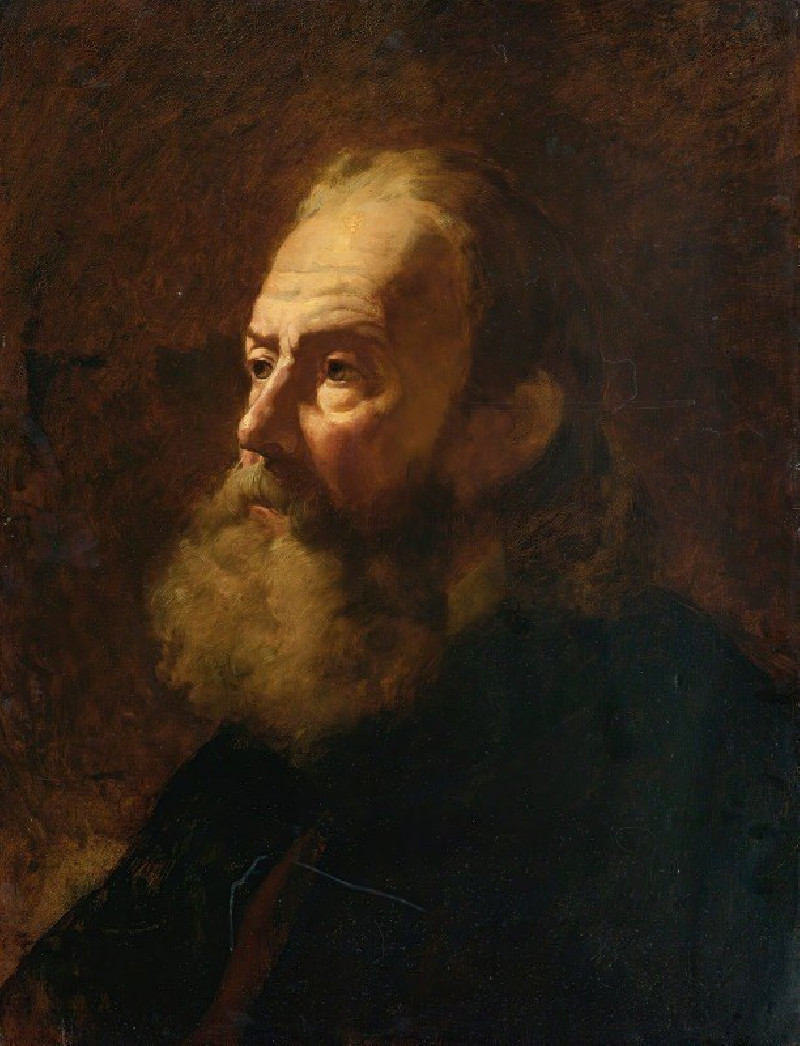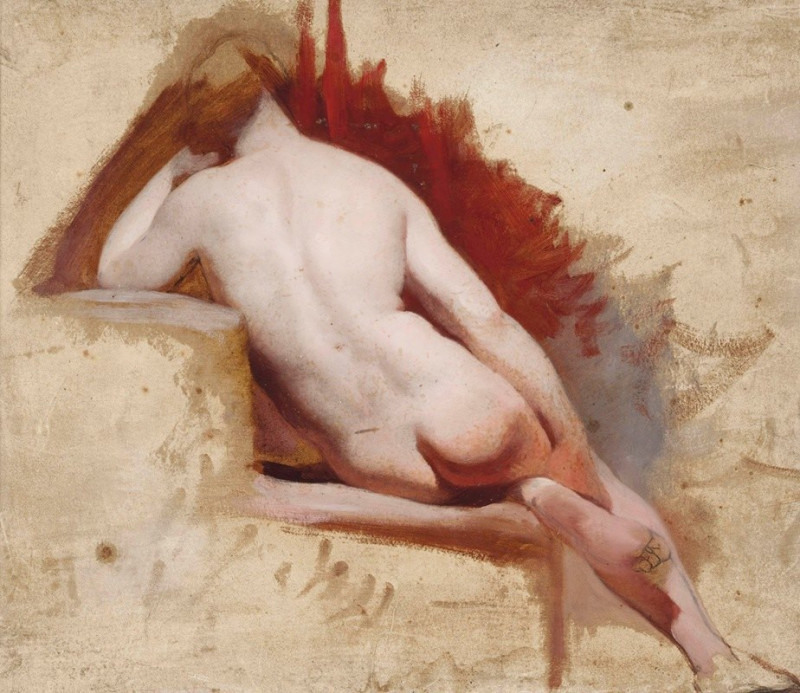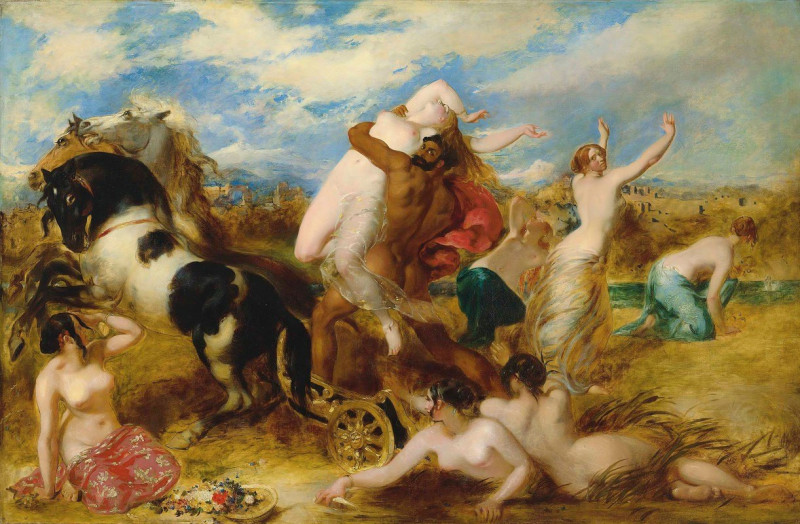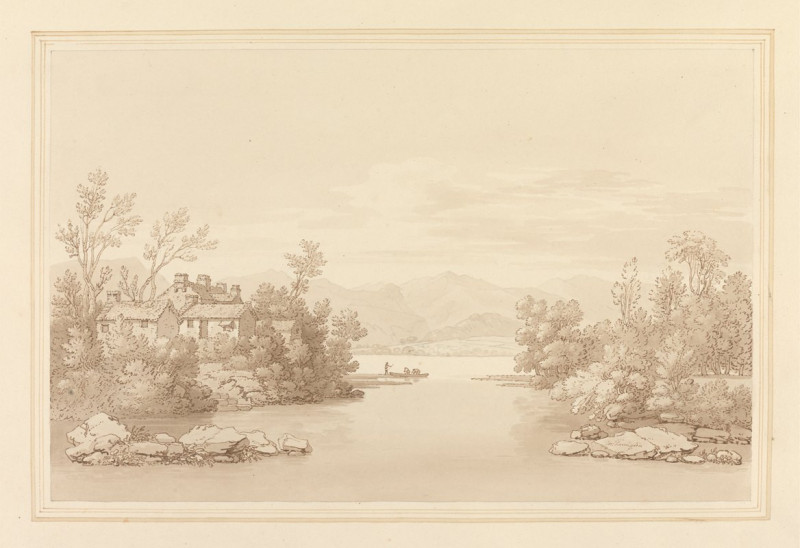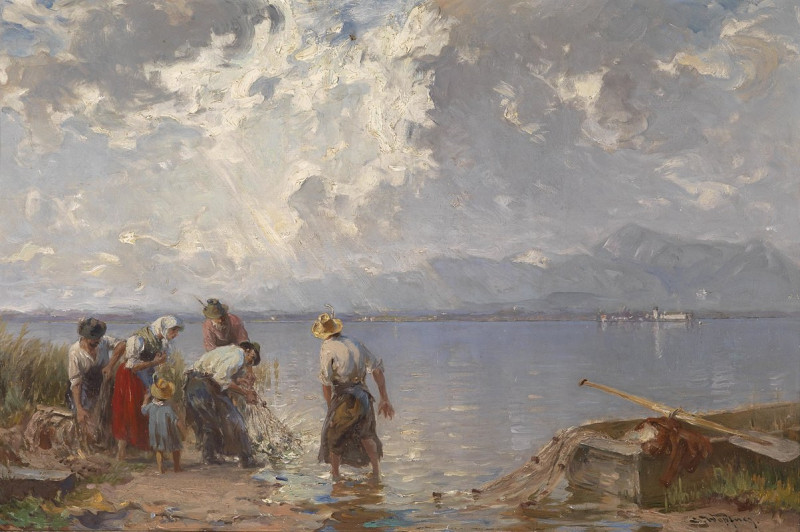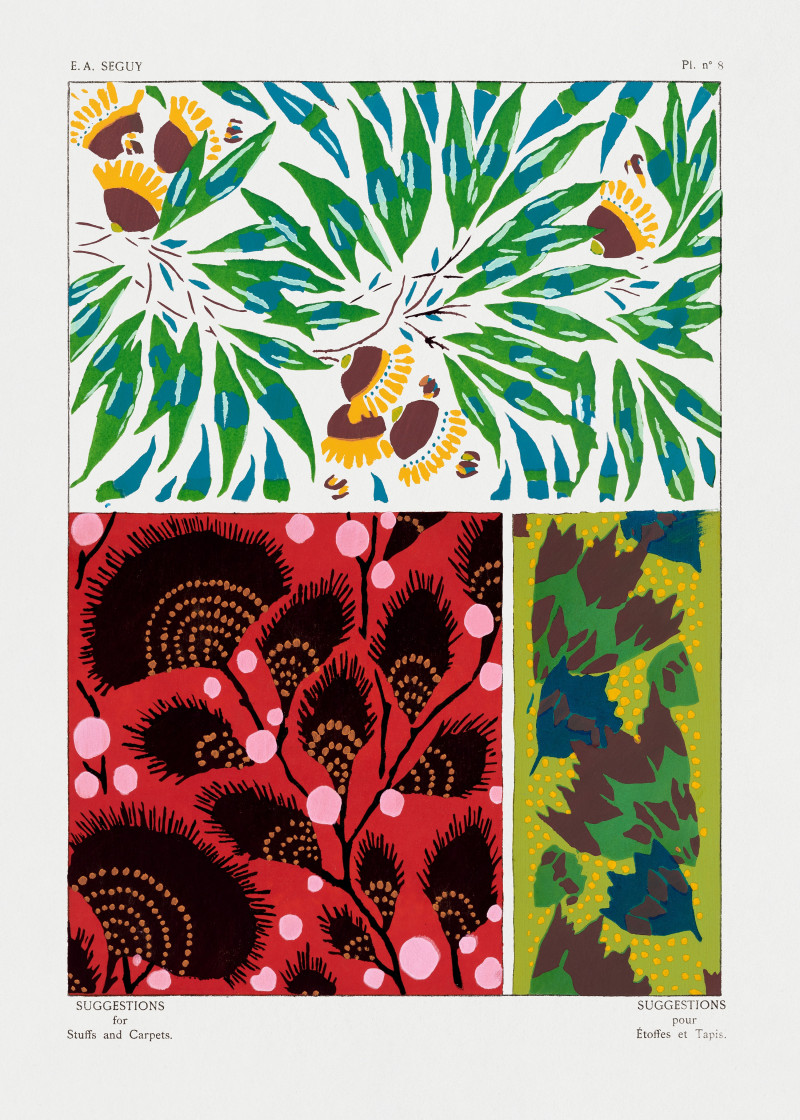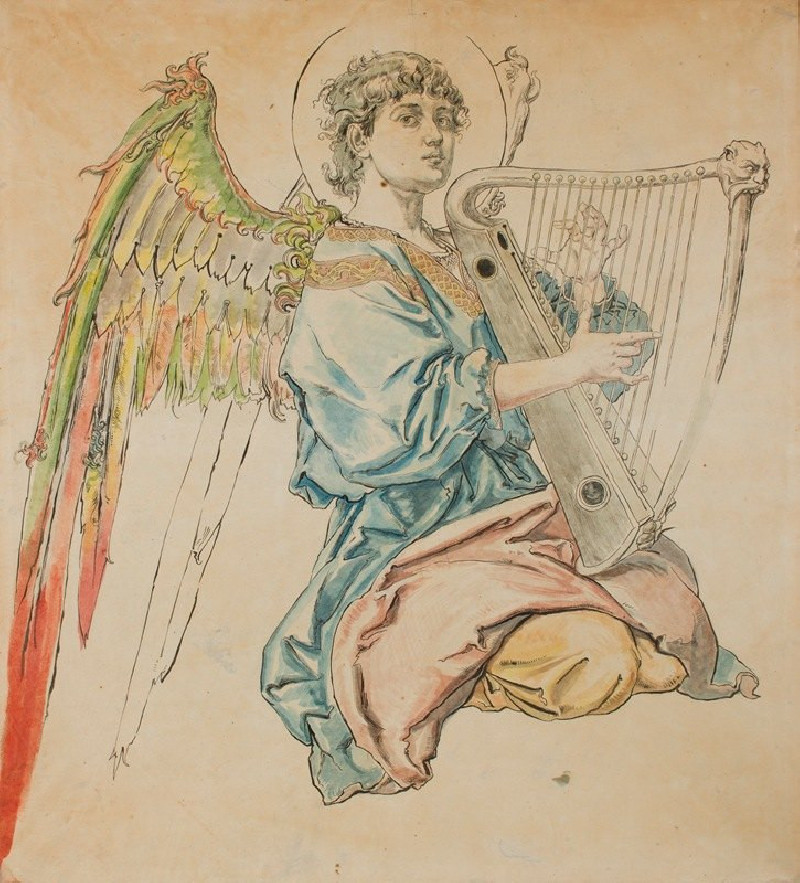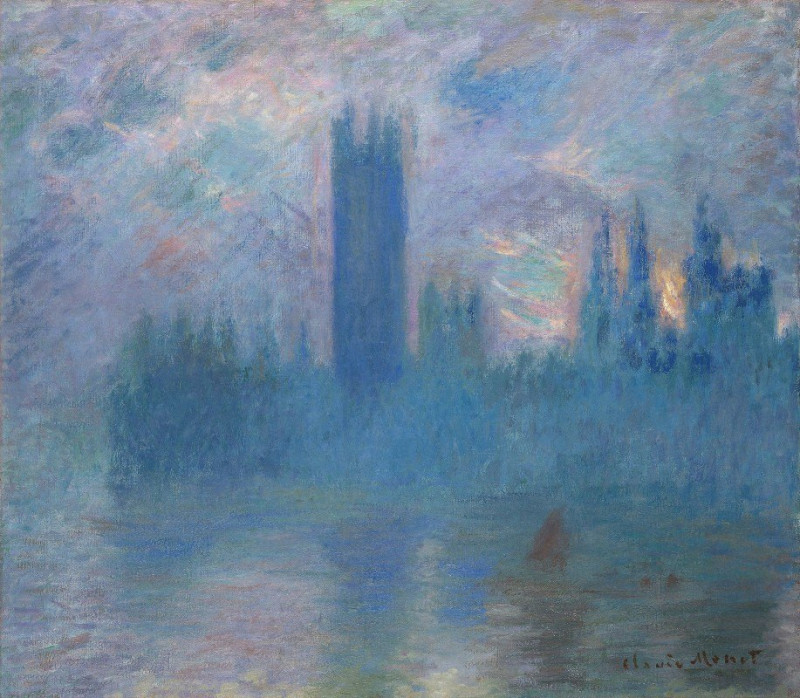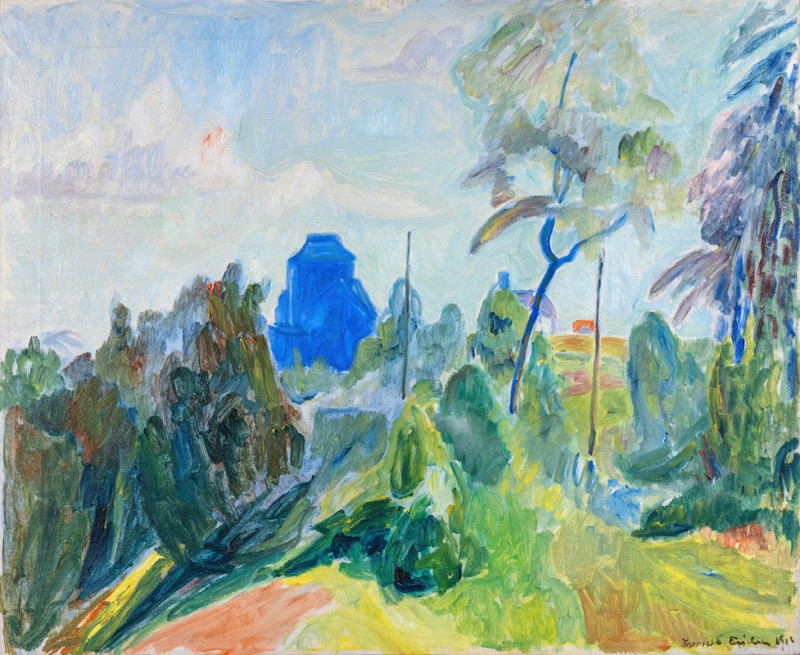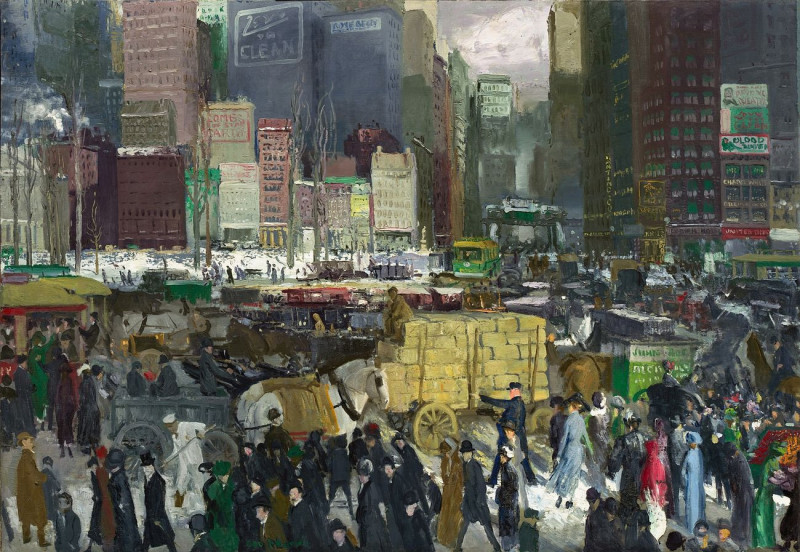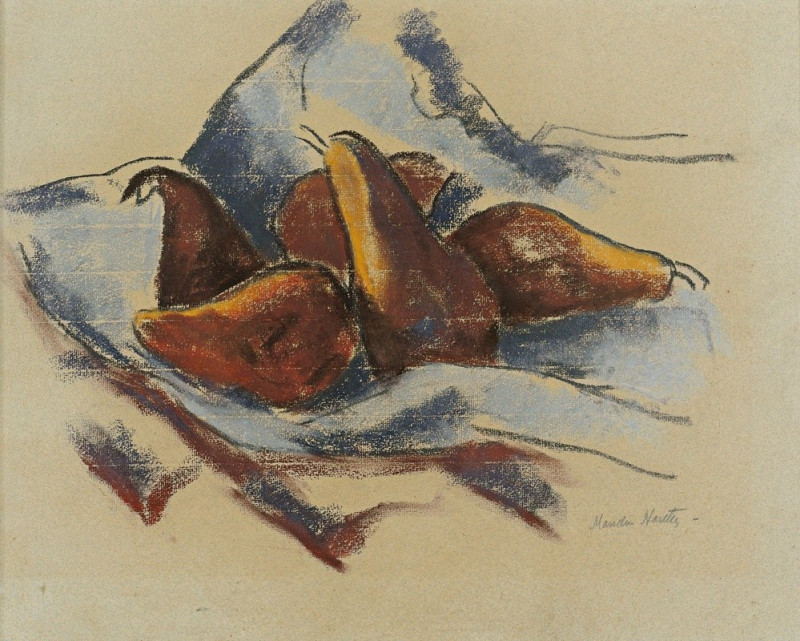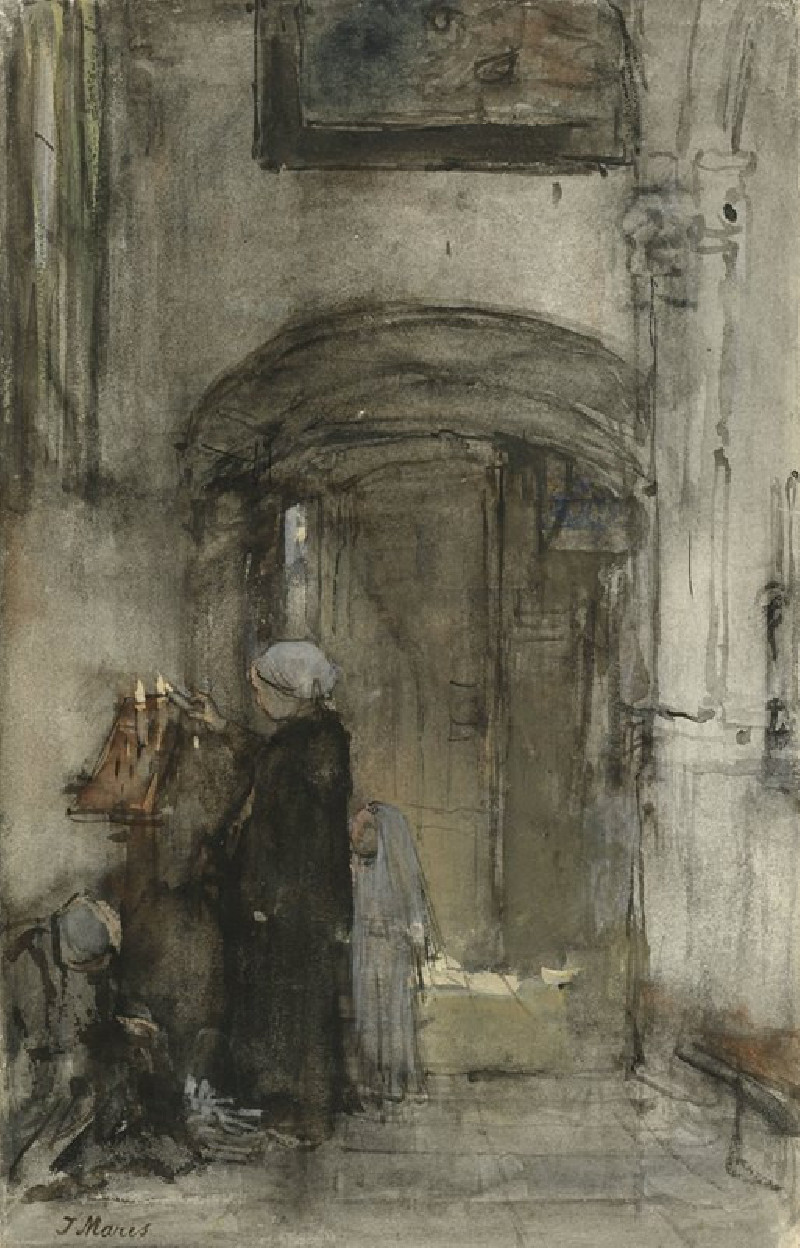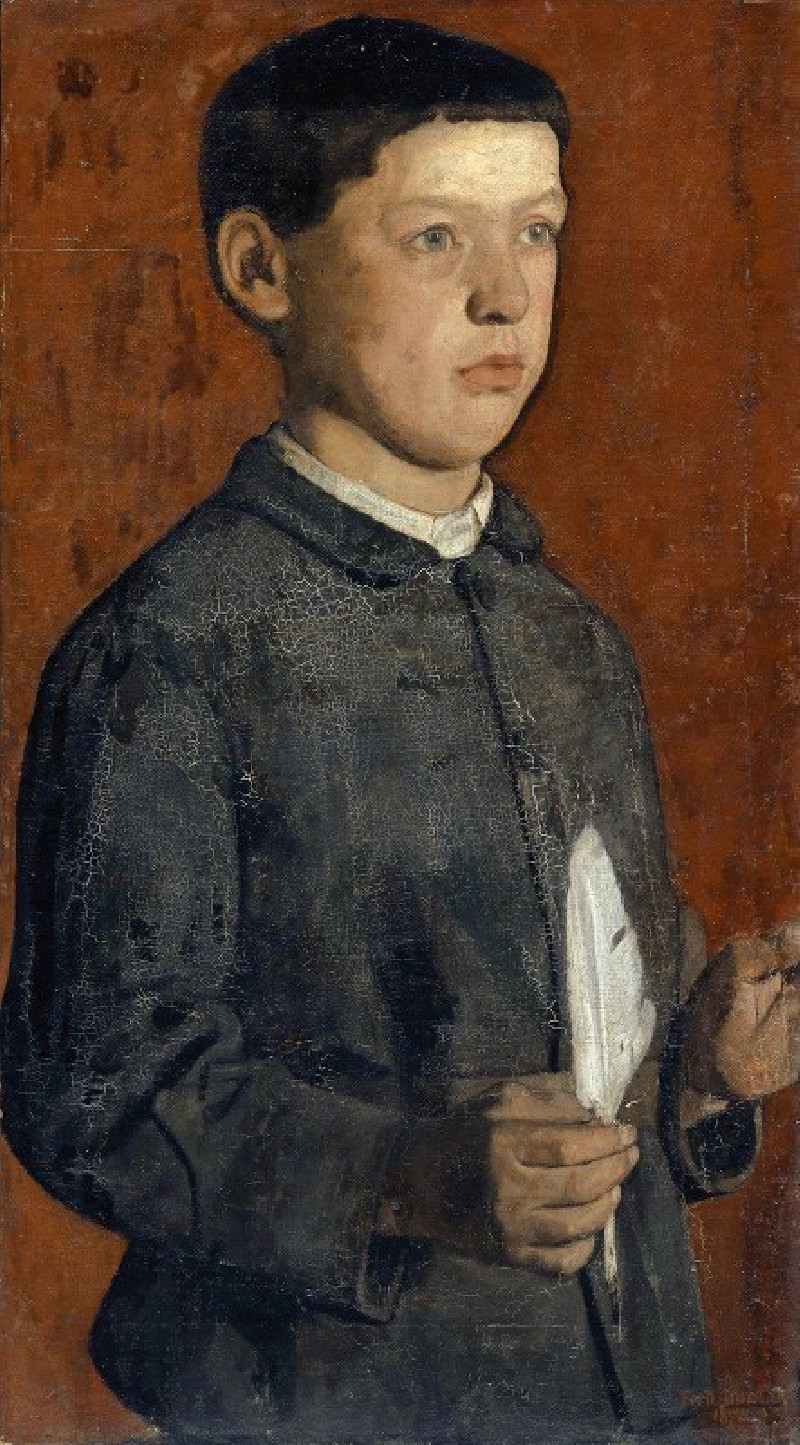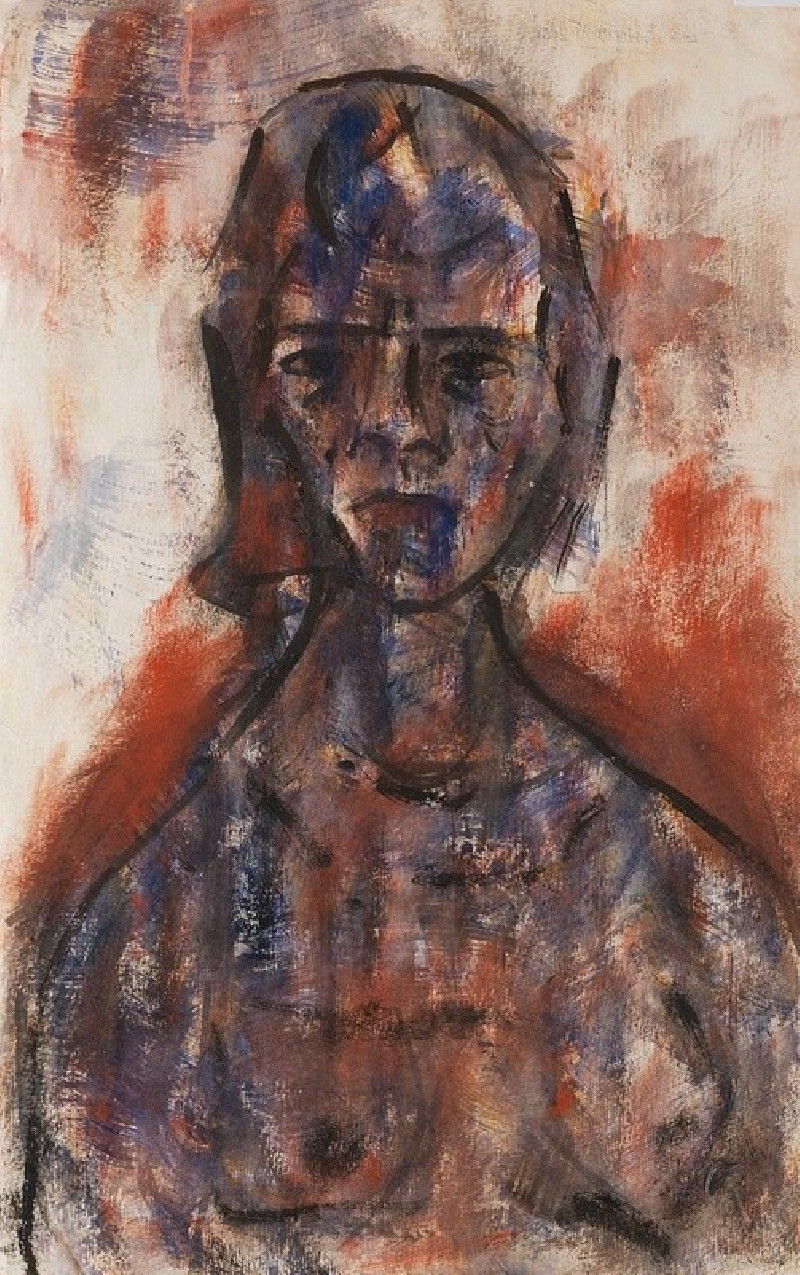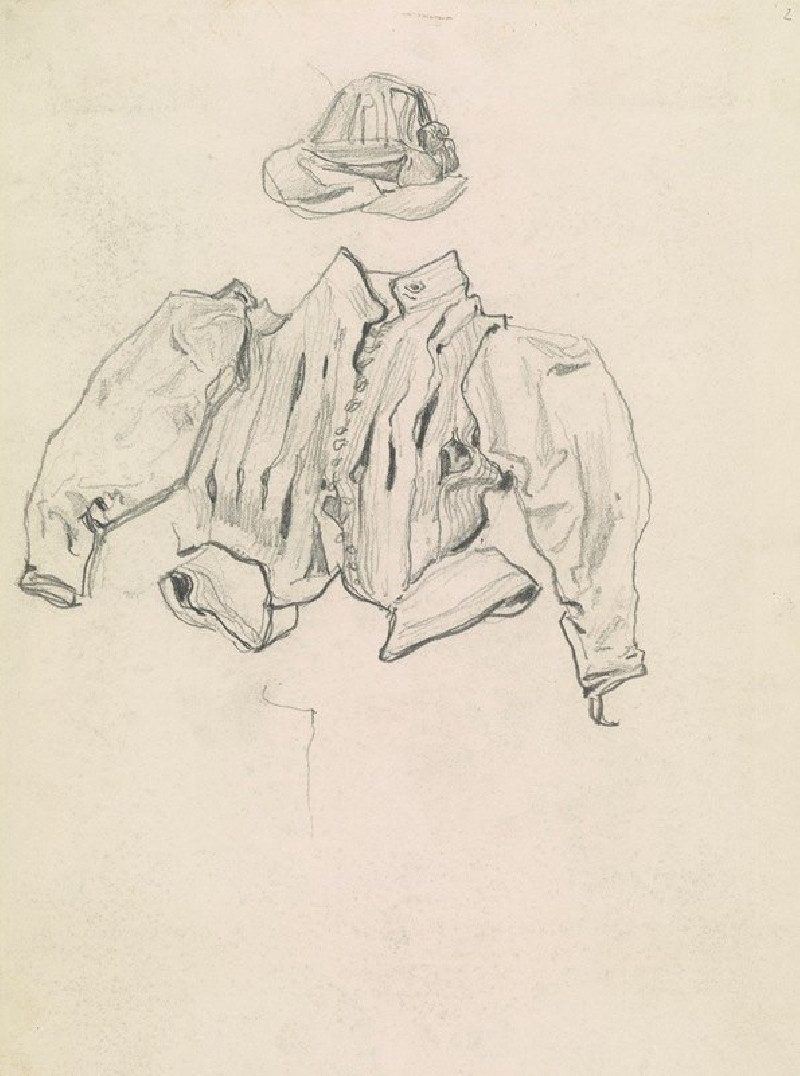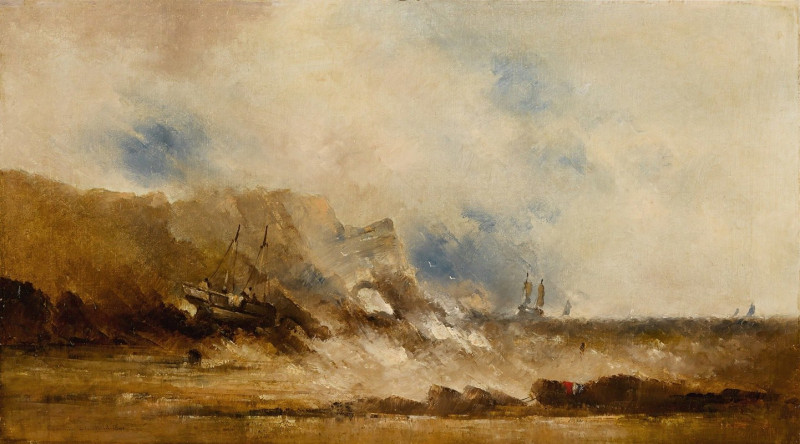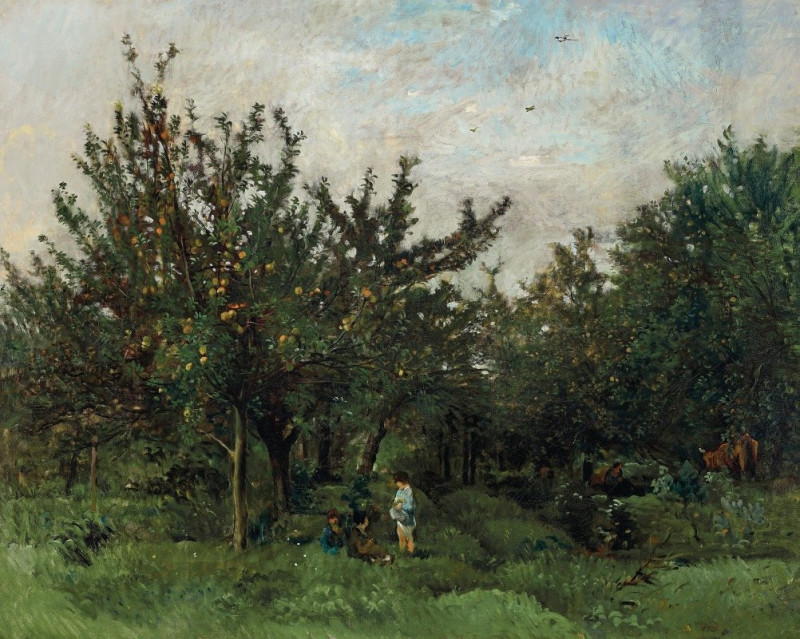Allegory (1807-1849)
Technique: Giclée quality print
Recommended by our customers
More about this artwork
William Etty’s painting titled "Allegory" (1807-1849) masterfully intertwines elements of classical mythology and romanticism to create a captivating visual narrative. This oeuvre, rendered in an oval format, features a richly colored and intricately detailed scene nestled in a lush forest setting.Central to the composition is a reclining female figure draped in sheer fabrics, exuding an aura of relaxed elegance. Her posture and the direction of her gaze draw the viewer into a moment of contemplative stillness. To her side, two playful cherubs add a light-hearted contrast to her composed demeanor. The cherubs, with their rosy cheeks and lively expressions, interact with one another, enhancing the allegorical nature of the painting.Etty’s use of vivid colors is evident in the draped red fabric that provides a dramatic backdrop, creating a visual anchor in the composition and emphasizing the themes of passion and vitality. A scattering of fruits and a vase in the foreground symbolize abundance and the earthly pleasures, subtly alluding to themes of fertility and opulence."Allegory" resonates with Etty’s penchant for the human form, celebrating beauty through a vivid portrayal of flesh tones and texture. His skill in capturing the interplay of light and shadow brings the figures to life, inviting the viewer to linger over the details of this enchanting tableau.Etty, known for his historical and mythological scenes, here explores themes of beauty, nature, and the human experience, making "Allegory" a compelling piece that remains relevant in its exploration of universal themes. This painting not only showcases Etty’s technical prowess but also his ability to evoke emotion and narrative through his art.
Delivery
Returns
William Etty was an English artist best known for his historical paintings featuring nude figures. He was the first significant British painter of nudes and still lifes. Born in York, he left school at 12 and became a printer in Hull. After seven years, he finished his apprenticeship and moved to London, where in 1807 entered the schools of the Royal Academy. There he studied under Thomas Lawrence and learned by copying the works of other artists.

